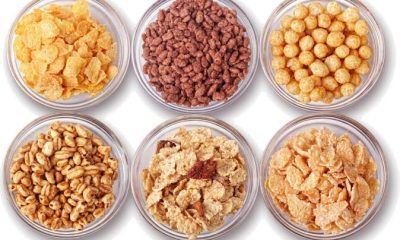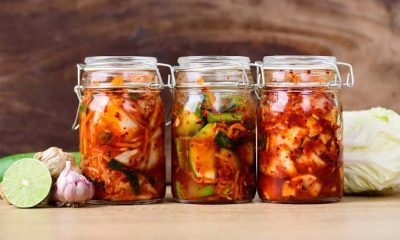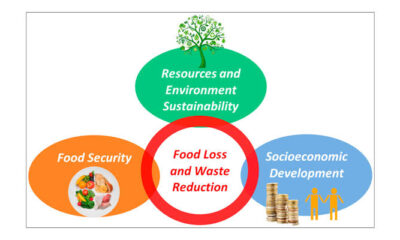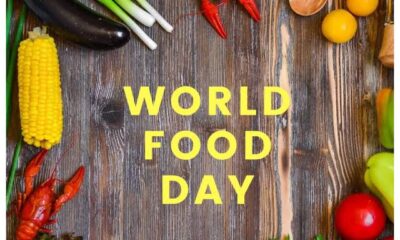Food Security
TIPS ON SOME HEALTHY FOODS.

The lists are not exhaustive, since every day researches are discovering new health giving phytonutrients in the foods we eat, It is these remarkable plant substances that we know are responsible for helping the body neutralize cell-damaging free radical, the unstable oxygen molecules that play a role in so many degenerative diseases. They also stimulate the body’s immune cells and infections fighting enzymes.
…… @WufasAgronet, we are Food Security (.processing ) Advocates.
✅ Earned FAO, WFP (WA) , WORLD BANK , UN SDG (Action campaign .), ROCKEFELLER FOUNDATIONS, IFAD, IDA(worldbank .),BBC NEWS, Jagaban Army, Today Reporters, Ripples news, Punch Newspapers etc Top Fan barges.
✅Member NAAJ, PAAJ, IFAJ and AFAN.
✅CONSULTANCY SERVICES IN HUMAN CAPITAL AND VALUE CHAIN DEVELOPMENT IN FOOD PROCESSING INDUSTRIES.
The following 15 foods or group of foods provide outstanding health benefits for people of all ages. Work as many of them into your daily meals as possible.
AVOCADO’S, Extra-virgin Olive Oil, and Other Sources of Healthy Fats.
Among the healthiest fats are the monounsaturated fats found in Avocados and avocado oil, Olive oil, peanut oil, and canola oil. They are essential for building cell membranes for nerve, heart and brain health, and for nearly all the body ‘s basic functions. Avocado s have been found to reduce the risk of heart disease because they contain beta- sitosterol, a plant sterol that can lower levels of bad (LDL.) cholesterol and good (HDL.) cholesterol. Avocados are also a good source of the B vitamin folate, as well as potassium and magnesium. Olive oil, in particular extra-virgin olive oil contains powerful diseases fighting antioxidant compounds called polyphenols. Because all the fats (even healthy ones .) are calorie dense , they should be consumed in moderation.
BEANS, LENTILS AND OTHER LEGUMES.
All legumes – from black beans and kidney beans to chickpeas and lentils – are loaded with filling protein and plenty of fiber as well as disease fighting phytonutrients. The Fibre in legumes can help lower total and LDL cholesterol and it also helps to slow the digestion process, preventing glucose and insulin from rising steeply. All of these make legumes a good choice for people with diabetes. While all legumes provide fiber, chickpeas and kidney beans have a whopping 7gms per half cup serving.
BLUEBERRY, CRANBERRY, RASPBERRY, BLACKBERRY AND OTHER HIGH ANTIOXIDANT BERRIES.
In general, berries are powerful sources of antioxidants including vitamins C but blueberries and cranberries in particular are stars. The flavornoid in blueberries are probably responsible for the fruit’s antioxidants power and recent studies show that the anticyanin in blueberry may help prevent cataract and short- term memory loss associated with aging. Studies have found cranberries to be protective against a variety of cancer and the flavornoids they contain (in particular quercetin. ) may play a role in preventing coronary artery disease thanks to their anti-inflammatory properties.
BROCCOLI AND OTHER CRUCIFEROUS VEGETABLES.
Broccolis, cabbage, Brussels sprouts, cauliflower, kale, bok choy, horseradish and other cruciferous vegetables are antioxidants powerhouse that can help lower blood pressure and cholesterol. Protect against macula degeneration, and reduce age-related memory loss. In addition, the Sulphur compound called SULFORAPHANE found in these vegetables may increase the activity of cancer – fighting enzymes in the body. Superstar broccoli is also packed with folate, riboflavin, and potassium, and contains considerable amounts of beta-carotene as well. Moreover, ounce for ounce broccoli has more vitamin C than an orange and as much calcium as a glass of milk.
COFFEE AND TEA.
New studies show that drinking caffeinated coffee (in moderation.) can reduce the risk of type 2 diabetes. This may be due to both the antioxidants in the coffee (the polyphenol in particular) and the caffeine (decaffeinated has not shown the same results .). Typical serving of caffeinenated coffee contain more antioxidants than typical serving of other antioxidant rich beverages such as grape juice and orange juice. As for tea, the polyphenol in white, green, oolong and black tea have been found to help lower LDL cholesterol. In addition, a recent study showed that regularly drinking. green tea, which is rich in a type of polyphenol called EPIGALLO CATECHINS GALLATE EGCG may help promote exercise – induced abnominal fat loss. CATECHINS EGCG have been shown to improve triglycerides levels and help protect against Alzheimer’s disease and certain form of cancer.
DARK CHOCOLATE AND COCOA POWDER. Several studies have shown that eating dark chocolate in moderation can lower blood pressure (.probably due to beneficial effects of its polyphenol on blood vessel elasticity and blood flow) and reduce levels of C-reactive protein (CRP.) in the body, a powerful predictor of heart disease and type 2 diabetes. The flavornoids in dack chocolate and cocoa powder may also help protect against certain form of cancer and diabetes. Choose dark chocolate that contains at least 70% cacao (and thus the least sugar) and brands of cocoa powder labeled 100% cacao.
FLAXSEEDS AND OTHER EDIBLE SEEDS
Whether you choose pumpkin seeds, sunflower seeds, sesame seeds or FLAXSEEDS all edible seeds are good sources of protein, fiber and unsaturated fats. Pumpkin seeds are also rich in zinc, a potential immune system booster, sunflower seeds are good source. of vitamin E and folate., possible cancer fighter and sesame seeds are excellent source of zinc, which vagans are often lacking in their diet. Flaxseeds (which can be used whole or grounded .) are rich in alpha – linoleic acid (.A LA) a heart – healthy Omega3 fat that’s highly unsaturated. Omega-3s have been found to help lower significantly elevated triglycerides and total cholesterol and to reduce the formation of blood clots (important for preventing a heart attack or stroke .) They can also help to control high blood pressure. Because all seeds are calorie dense be sure to enjoy them in moderation.
LOW FAT DAIRY
There are mounting evidence that something in dairy foods (milk, yogurt and cheese .) perhaps the vit D that’s in cheese or added to fortify milk and yogurt, not only strengthen bones hut also protect the heart., reduce high blood pressure and fight breast cancer. The jury is still out about whether dairy can aid weight loss. Choose fat – free or reduced fat products to avoid excessive saturated fat.
MUSHROOMS
The only fruit or vegetables source of vitamin D, mushrooms contain ergosterol a plant sterol that convert to vit D when exposed to real or artificial sunlight. In addition to vitamin D mushrooms contain eight essential amino acid as well as niacin, riboflavin, thiamin and dietary fiber. They are also an excellent source of potassium, a mineral that help lower blood pressure.. SHIITAKE mushrooms in particular have been found to help boost immune system and may. help protect against certain form of cancer as well as atherosclerosis and bacteria and viral conditions.
OAT, BARLEY WHEAT AND OTHER WHOLE GRAINS.
Recent studies have shown that eating high fiber whole grains (.oat, barley, Wheat, wild rice, quinoa, millet, barley, spelt and rye for example ) can actually lower the risk of diabetes by stabilizing blood sugar and controlling insulin production. The insoluble fiber in whole grains also helps prevent artery clogging atherosclerosis by interfering with cholesterol absorption.
RED WINE.
A phytonutrient found in red grapes known as RESVERATROL may help suppress plague development and protect against artery – damaging LDL cholesterol, thanks to its antioxidants and anti-inflammatory properties,. Increasing. evidence also indicates that RESVERATROL may help protect against cancer and type 2 diabetes and may activate a so-called survival gene that has been shown to extend the lives of mice. Enjoy a glass or two of red wine with a meal but stop at That. More than one drink for women and two for me can increase the risk of heart disease (and possibly breath cancer for women) and have other harmful effects on the body .
SALMON AND OTHER OMEGA-3-RICH FISH
Fatty cold water fish such as salmon (buy wild if you can.) Herring, Mackerel, Anchovies and Sardines are all rich in heart- healthy Omega3 fatty acids. Studies have also found that including these types of seafood in one’s diet can help reduce blood pressure, play positive role in mood, memory loss and other brain functions and reduce inflammation. Try to eat Omega3s rich seafood two or thrice a week.
SWEET POTATOES and OTHER BRIGHT ORANGE VEGETABLES.
An outstanding source of carotenoids (including beta-carotene.) as well as vitamin C, calcium and potassium, sweet potatoes (and other orange vegetables such as carrots pumpkin and butternut squash.) can help reduce LDL cholesterol, lower high blood pressure. fight cataracts and age-related macula degeneration and boost your resistance to cold and infections. The carotenoids in these vegetables also help those with diabetes by stabilizing their blood sugar levels and lowering insulin resistance and they have been found to protect against inflammatory conditions such as asthma and anthritis. Bright orange fruits such as apricots, mangoes and orange are also good source of beta carotene.
TOMATOES
Rich in the antioxidant vitamin C, tomatoes also contain a red pigment called lycopene, a powerful carotenoids that may help lower the risk of heart disease and cancer (especially prostate, breast and skin cancer .) Tomatoes also contain lutein and zeaxanthin – antioxidants- rich plants pigment that can play a role in reducing the risk of macular degeneration, a leading cause of partial blindness in people over the age of 50.
WALNUTS, ALMOUNDS AND OTHER NUTS.
Wall nuts, almonds, hazelnut, pistachios, peanuts and pecans are all excellent sources of protein, heart- healthy monounsaturated and polyunsaturated fats, vitamins, minerals and fiber. When substituted for saturated fat in the diet, nuts can help lower total cholesterol as well as bad
(LDL) cholesterol without affecting levels of good (HDL.) cholesterol. Unlike other nuts, walnuts are high in alpha linoleic acid (.ALA) an Omega3 fat that has been shown to have anti oxidant and anti inflammatory properties and help to keep triglycerides, the bad fat associated with pre-diabetes under control. Moreover, the polyphenol in walnuts may also help improve cognitive skills. Since all nuts are calorie dense, try to limit your total intake to 1ounce(about a quarter of a cup.) per day.
At WufasAgronet, we are competent and reliable Food Technologists into Human Capital and Value Chain Development Consultancy. Enhancing global competitiveness and International Best practices in Food Processing technology.
Contact email wufasagronet@gmail.com
Food Security
CHARACTERISTICS OF GOOD DETERGENT

CHARACTERISTICS OF GOOD DETERGENT
www.wufasagronet.com
….. @WufasAgronet, we are Food Security (processing) Advocates.
✅Earned FAO, WFP, WORLD BANK, IFAD, IDA, IMF, UNSDGs, USAID, ROCKEFELLER FOUNDATIONS, BBC NEWS, JAGABAN ARMY, PUNCH NEWSPAPERS, GUARDIAN Newspapers, Today Reporters, Ripples News etc TopFan Barges.
✅Member NAAJ, PAAJ, IFAJ AND AFAN.
✅Consultancy Services in Human Capital and Value Chain Development in Food Processing technology.
DETERGENTS used for washing in industries should have the following characteristics.
-Ability to loosen organic matters eg. Soil etc. (organic dissolving power)
-Good rinsing power.
-Adequate wetting power to allow detergent to penetrate the deposit acting quickly and efficiently.
-Good sequestering power – removal of mineral deposits eg. Calcium, magnesium.
-Emulsifying power – fragmenting oil into tiny particles.
-Adequate germicidal power to sterilized dirty detergent solutions.
-Ability to dissolve alkali solutions precipitate of calcium and magnesium salt.
-It should not be corrosive.
-It should posses good buffering and saponifying powers.
The above characters may not be contained in a single detergent but if blended with others rich in some of the characters, a good result may be achieved.
MAJOR SOURCES OF DETERGENTS.
{Alkalis} – Caustic soda is the basic ingredient of detergent however,
there could be addition of other additives to give a property to the detergent. Other basic ingredients are Soda ash, Sodium silicate and others as seen above.
SEQUESTERING AGENT.
This is the action of polyphosphate in precipitation of calcium and magnesium salts in water creating additional wetting agent and polyphosphate to assist sequestration this would constitute most effective and economical clean-in-place detergent for brewing cleanings.
WETTING AGENT.
Known generally as synthetic detergent, Wetting agents are classified into 3 major types :An-ionic and Cat-ionic wetting agents.
The An-ionc type is commonly used for detergent formulation eg. Sulphated alcohols alkyl or aryl sulphonates. Non-ionic are mostly the polyethylonic oxide. On blending of both an ionic and catonic the result may be excessive foaming. It also processes good wetting, dispersing and rinsing power.
STERILISING AGENT.
Alkalis porcess sterilizing power, which increases with pH and temperature.
At WufasAgronet, we are competent and reliable Food Technologists into Human Capital and Value Chain Development Consultancy in Food Processing. Contact us email :wufasagronet@gmail.comPls go through the earlier sent documents.
Food Security
SEASONINGS. FLAVORS. FOOD INGREDIENTS.

✔Contact us @WufasAgronet for wide range of integrated flavors and seasonings, we are Manufacturers’ Representative.
…. @WufasAgronet we are Food Security (Processing) Advocates.
✅Earned FAO, WFP, WORLD BANK Group, UNSDGS, ROCKEFELLER FOUNDATIONS, BBC NEWS, JAGABAN ARMY, PUNCH NEWSPAPERS, GUARDIAN Newspapers, Today Reporters, Ripples News, etc TopFan Barges.
✅Member NAAJ, PAAJ, IFAJ & AFAN.
✅CONSULTANCY SERVICES IN HUMAN CAPITAL AND VALUE CHAIN DEVELOPMENT IN FOOD PROCESSING.
✔FLAVORS
BAKERY & PASTRY FLAVORS
*Vanilla flavor
*Condensed milk flavor
*Butter scotch flavor
*Enzyme chocolate flavor
*Enzyme butter flour
*Milk flavor
*Coconut flavor
✔ CONFECTIONERY & CANDY FLAVORS
*Strawberry flavor
*Chocolate flavor
*Orange flavor
*Butter vanilla flavor
*Banana flavor
*Mango flavor
*Lemon flavor
*Milk flavor
*Vanilla flavor
*Apple flavor
*Mixed berry flavor
*Coconut flavor
*Caramel flavor
*Honeydew flavor
*Condensed milk flavor
*Peanut flavor
*Cheese flavor
✔BEVERAGE FLAVORS
*Apple flavor
*Coconut flavor
*Caramel flavor
*Mango flavor
*Lemon flavor
*Banana flavor
*Pineapple Flavor
*Orange flavor *Strawberry flavor
*Natural Ginger flavor
*Malta flavor
*Grape flavor
*Raspberry flavor
✔ENCAPSULATED FLAVORS
*Strawberry flavor
*Raspberry flavor
*Mixed Berry flavor
*Orange flavor
*Apple flavor
*Banana flavor
✔BEVERAGES (CONCENTRATES, COMPOUNDS, BASES AND EMULSIONS) :
*Pineapple
*Lemon
*Ginger
*Cola
*Black currant
*Orange
*Strawberry
*Chapman
*Apple
*Banana
*Mixed fruit
*Cocopina
✔SAVOURY FLAVORS
*Beef flavor
*Chicken flavor
*Tomato flavor
*Cheese flavor
*Seafood flavor
*BBQ flavor
*Roasted flavor
*Smoked fish flavor
*Suya flavor
*Peanut flavor
*Roasted Chicken flavor
*Sardine flavor
*Smoke flavor
✔MILK POWDER :
*Fat filled milk powder
*Skimmed milk powder
*Full cream powder
*Flavored milk powder
*Butter milk powder
✔ICE-CREAM, YOGHURT & DAIRY FLAVORS :
*Yogurt flavor
*Vanilla flavor
*Strawberry flavor
*Banana flavor
*Mixed Berry flavor
*Chocolate flavor
*Cherry flavor
*Mango flavor
✔SEASONINGS:
FOOD SEASONINGS
*Beef seasoning
*Chicken seasoning
*Tomato seasoning
*Cheese seasoning
*BBQ Seasoning
*Seafood seasoning
*Noddles seasoning
*Pasta seasoning
*Jollof seasoning
✔SPICES :
*Cinnamon powder
*Onion powder
*Ginger powder
*Garlic powder
*Paprika powder
*Nutmeg powder
✔FOOD INGREDIENTS :
*Fat Replacer (Handisol – 25)
*Sweetener
✅OTHERS :
*Real meat reaction pastes
*Vegemeat for sausage roll
*Spice flavor oil
*Liquid and oil soluble flavor
*Soup and gravy mixes
*Ice cream premix
*BBQ sauce
*Tomato /Pizza sauce etc.
At WufasAgronet , we are competent and reliable Food Technologists into Human Capital and Value Chain Development Consultancy in Food Processing technology training the teeming youthful population including teirary institutions graduates in Global Competitiveness and International Best practices in Food Processing technology.
Contact email wufasagronet@gmail.com
Food Security
SECURITY PATHWAYS IN RELATION TO SUSTAINABLE FOOD SECURITY OF A NATION.

Good governance is predicated on ensuring the actualisation of the various security architecture of a Nation. The political barometer is also monitored through the efficiency of the security pathways which are :
INTERNAL SECURITY, INFORMATION/COMMUNICATION. , FOOD SECURITY, HEALTH ,EDUCATION, ELECTRICITY, TRANSPORTATION AND INDUSTRIAL GROWTH.
.
All the above are the essential security systems that can produce and provide QUALITY POPULATION through good and quality SUPERVISION
✅NATIONAL Security of life and properties is the (numero uno) number one responsibility of the Head of government be it President, Head of state and others. The mandate to secure life and property is paramount , they control and command the apparatus of security such as adequate Policing, effective Armed forces- Army for protection against external or internal aggression. Customs / Immigration for vigilant boarders patrol to prevent smuggling and immigration control amongst many others . Equipping them with weapons, Aircrafts, Vehicles, Boats etc.
For effective surveillance. In tackling the menace of bandits and kidnappers who have taken over the forest prohibiting farming activities . Armed Forest Guards / Rangers should be introduced.
INFORMATION/COMMUNICATION.
The entire world is in information age.
The constitution clearly stipulate that every person shall be entitled to freedom of expression, freedom to hold opinions and to receive as well as to impact ideas and information.
However, it is the opinion of this writer that freedom be guided with secured intent to prevent abuse that may result in conflicts and war through hateful and unguided utterances.
The most acceptable form of communication is such that promote humane, responsible and patriotic reportage upholding the concept of discipline and promoting values nationally and internationally.
A lot of opportunity mostly untapped abound for investment in Information and communication like Print, Electronic and ICT media.
For industrial growth, information through advertisement, publication and social media is vital for public awareness.
FOOD SECURITY
Whether one eat to live or live to eat is a matter of semantics the bottom – line is Food is the main sustainace of bodies and souls. The importance of food cannot be over emphasised . knowing this fact of life has made the developed world to appropriately plan for provision of quality food for their citizens. Provision of food is prioritize in their national agenda. It is on this note that the United Nation’s clarion call to others in the world to emulate the culture of Sustainable Food Security ensuring the Tripple A(s). of AVAILABILITY, ACCEPTABLITY and AFFORDABILITY. ( UN 2030 food security agenda) of good quality food for the underdeveloped countries who are import dependent on basic food items such as Rice, Sugar, Dairy , Beverages etc .
Presently, Nigeria is revolutionising agrioprenuerial activities, it’s hoped that the present policies on agriculture will not be Summersaulted. The Maputo declaration on allocation of minimum 10% of the country’s annual budget must go to agriculture. Food must be made a constitutional right for all. The authority must take time to support Micro and Small scale Agroprenuerails activities to adapt to climate change. Agroprenuerail activities is the surest way to lift hundreds of millions out of hunger, poverty, conflict and deaspiration.
HEALTH CARE
Health is wealth – Primary Health care delivery must be taken to the grassroot levels, while Rural Health care moblisation be made available and effective all must be well equipped with vaccines, drugs, consumables and other biologicals.
— Ensure maintenance of standard by private sector through effective monitoring.
— Tapping into Herbs Processing , local medical herbs be Researched into by National Institute of Pharmaceutical RnD. In Collaboration with Fed Mins. of Science and Technology.
— Integration of alternative medicine into health care.
— Health insurance scheme must be intensified on .
— Stemming of illegal importation of smuggled fake drugs and illegal drug manufacturing in the country.
EDUCATION
A Society, Community and Nation is as good as the percentage of her literary population. The various levels of education are Primary , Secondary and teriary education 6-3-3-4 .Education must attract appropriate budget at all time. Education is being administered by Public and Private participation at all levels. The special education must receive attention by provision of special equipment such as braille machine, audiometer etc.
ELECTRICITY
To the chagrin of the unsuspecting consumers and Contrary to claim of the generation companies that generation capacity has improved to 7000 MW , the actual has been fluctuating between 2500 -3500 MW.(April 2019)
The idea of mono grid must be jettison while the legislation be relaxed to accommodate Private participations in generation. While effort must be intensified on the Green Bond of #10.97bn raise in December 2018. for financing of SOLAR energy.
Industrial development is unachievable without steady supply of electricity. A green belt of
Industrial Parks on Green energy is recommended in all the States of federation.this will sustain industrial activities that will promote growth.
TRANSPORTATION
This sector is an indispensable catalyst for stimulating economic, social, political and strategic/defence development of a Nation. All the National Development plans must accord the transport sector very high priority. In the formulation of National Transport policy, there must be defined objectives such as economic efficiency and coordinated development plan.
All forms of transportation system are embraced in Nigeria. Motor ,Railway transportation, inland waterways, aviation terminal and handling facilities seaports, airports and riverports including other ancillary facilities.
The administration of Transportation is vested in both Fed. Ministry of Works and Housing (Fed. Highways – Interstate roads Construction and maintenance) and State Ministry of Works/Transport (interstate roads while LG is responsible for Urban and Rural roads Construction and maintenance.
Aviation Ministry for Civil Aviation, Airports Development Management and Metrological services.
Internationally, the railway system is more affordable and relatively saver the frequency in Nigeria must be upgraded not scanty show up as is now the case.
INDUSTRIAL GROWTH
The economic growth rate ( 2019) is 2.1% ,this development is not unconnected with the dismal performances of the various indices above. eg the manufacturing growth rate is presently less than 7% although the Fedreral government set a 10.6% goal in 2017.which was to be driven by SME. Productivity is the only stimulant for Industrial growth. Farming output is barely about 22% mostly subsistence. .about 55% of work force is absorbed by agriculture. The major farming communities in North East, Middle belt downwards to the southern section are being sacked either Boko Haram terrorist or Pasteuralist /Farmers conflicts and banditry.
The various activities as enumerated in this writeup are all depended on Food security system. FOOD SECURITY MUST BE IN THE FRONT BURNER TO ACHIEVE SUCCESS. IN OTHER SEGMENTS.
CONCLUSION
— FOOD Security issues must be in the front burner of government’s agenda. Since it encompasses all other activities.
— The effectiveness of other parasatal must be ensured through adequate supervision.
— TO PREVENT IMMINENT DANGER OF FAMINE. Forest Guards (armed) must be appropriately deployed to secure the large expanse of the forest for Farming activities.
— Indigenous Reserch and Development on local Technology be improved on.
— Electricity generation from Green Energy source should be encouraged in the Industrial parks.
— Food Security system must be made a CONSTITUTIONAL RIGHT for all the citizenry.
At WUFAS AGR0Net, we are Competent and Reliable Food Processing Technologists ,into Human Capital Development Consultancy. Centering on ETHICS of Food Processing Technology. Training on industrial food processing (General Manufacturing Principles ) to the teeming youthful population, startups and other Food handlers. We are seeking Collaboration and Strategic partnership with corporate bodies, NGOs and others
Interested in Food Security.
Contact: 08157784430, 08034064270.
Emails wufasagronet @gmail.com
-

 Food Security3 years ago
Food Security3 years agoREALITIES OF LARGE SCALE INTEGRATED AGROPRENUERAIL FARMING AND FOOD PROCESSING BUSINESS IN NIGERIA. (Update)
-

 Environmental3 years ago
Environmental3 years agoOPINION: AN ACCESSMENT OF NIGERIA’S PERFORMANCE IN THE OPTICS OF THE UN 17 SUSTAINABLE DEVELOPMENT GOALS AGENDA 2030. ( Periodic quaterly review & update — ( September ’22)
-

 Food Security4 years ago
Food Security4 years agoEXCITING FACTS ABOUT RANCHING
-

 Food Security3 years ago
Food Security3 years agoTOP SEVEN AGRICULTURAL COMMODITIES WITH HUGE UNTAPPED POTENTIALs – update
-

 Food Security4 years ago
Food Security4 years agoMITIGATING THE MENACE OF CLIMATE CHANGE THROUGH GREENBOND ISSUANCE.
-
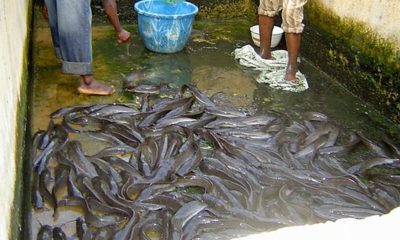
 Food Security3 years ago
Food Security3 years agoFISH PROCESSING TECHNOLOGY
-

 Food Security4 years ago
Food Security4 years agoTHE ROLE OF E -COMMERCE IN SYNERGISING AGRICULTURAL VALUE CHAIN DEVELOPMENT IN AFCTA IS SINE QUA-NON.
-

 Food Security3 years ago
Food Security3 years agoTHE IMPENDING GLOBAL FAMINE FROM THE PERSPECTIVES OF THE WORLD INSTITUTIONAL LEADERS.

